Did you know that the serrano pepper is hotter than a jalapeño but not as scorching hot as other peppers? This small chili pepper packs a punch with its medium heat level, making it a versatile ingredient in various dishes. Whether you’re a fan of spicy cuisine or looking to add some heat to your favorite recipes, the serrano pepper is a must-try ingredient.
Key Takeaways:
- The serrano pepper is hotter than a jalapeño but milder than habanero peppers.
- It has a bright, grassy flavor when green and a smoky, earthy sweetness when red.
- Serrano peppers are widely used in Mexican cuisine, particularly in salsas, sauces, and pickled vegetables.
- When cooking with serrano peppers, remember to wear gloves to avoid chili burn and remove the seeds and ribs for a milder taste.
- If you don’t have serrano peppers, you can use jalapeños as a substitute for a similar flavor profile.
Serrano Pepper Fast Facts
Want to learn some quick and fascinating facts about serrano peppers? Look no further! Here are some key details about these flavorful and versatile peppers:
- Scoville heat units (SHU): 10,000-23,000
- Median heat: 16,500 SHU
- Origin: Mexico
- Size: Approximately 2 to 4 inches long
- Flavor: Bright and grassy
- Culinary use: Widely used in Mexican cuisine for salsas, sauces, and pickling
As you can see, serrano peppers pack a punch when it comes to heat, with a range of 10,000-23,000 Scoville heat units. Their vibrant flavor adds a unique twist to various culinary creations, making them a popular choice in Mexican cooking. Whether you’re looking to spice up your salsas, add some zing to your sauces, or pickle these peppers for a tangy treat, serrano peppers are sure to elevate your dishes to the next level.
How Hot are Serrano Peppers?
Serrano peppers are known for their medium heat level, providing a significant step up in spiciness compared to milder peppers. Let’s explore the Scoville heat units (SHU) and how serrano peppers compare to jalapeños and habaneros.
Serrano Pepper Heat Level
Serrano peppers typically range from 10,000 to 23,000 Scoville heat units (SHU). This means they offer a moderate level of heat that can add a flavorful kick to dishes without overwhelming the taste buds.
Comparison to Jalapeños and Habaneros
Compared to jalapeño peppers, which have a heat range of 2,500 to 8,000 SHU, serrano peppers are noticeably hotter. They provide a bolder and more intense heat experience for those who enjoy spicier foods.
On the other hand, serrano peppers are milder compared to habanero peppers, which range from 100,000 to 350,000 SHU. Habaneros pack a fiery punch, making them one of the hottest chili peppers available.
| Pepper | Scoville Heat Units (SHU) |
|---|---|
| Serrano | 10,000-23,000 |
| Jalapeño | 2,500-8,000 |
| Habanero | 100,000-350,000 |
As shown in the table above, serrano peppers fall in the middle of the heat spectrum, making them a versatile choice for those who enjoy a flavorful kick without overpowering heat.
Serrano peppers’ heat level adds excitement and intensity to a wide variety of dishes, from salsas and sauces to pickled vegetables. Now that we’ve explored their heat, let’s delve into the origins of the serrano pepper and its culinary uses in the upcoming sections.
Where Does the Name Come From?
The name “serrano” derives from the Spanish term for “from the mountains,” which alludes to the pepper’s origin in the mountainous regions of Puebla and Hidalgo in Mexico.
Serrano peppers are extensively cultivated in Mexico and the United States, with Mexico being the leading producer, yielding approximately 180,000 tons of serrano peppers annually.
| Country | Serrano Pepper Production (in tons) |
|---|---|
| Mexico | 180,000 |
| United States | 15,000 |
| Others | 5,000 |
What Do They Look Like?
Serrano peppers share some visual similarities with jalapeños, but they have a distinctive elongated shape. These peppers typically measure 2 to 4 inches in length and feature a gracefully curved appearance. Unlike jalapeños, the walls of serrano peppers are thinner, and they have less cavity space. Initially, serrano peppers are bright green, but as they mature, they transition into a vibrant red color, each stage offering a unique flavor profile.
At first glance, the length and shape of serrano peppers set them apart from their chili counterparts. Their slender, curved structure makes them an attractive addition to any dish, while their vibrant colors add a visual pop. When you come across serrano peppers in the produce aisle or your garden, their unique appearance is sure to catch your eye.
| Feature | Description |
|---|---|
| Length | 2 to 4 inches |
| Shape | Elongated and curved |
| Color | Starts green, matures to red |
| Wall Thickness | Thinner than jalapeños |
| Cavity Space | Less than jalapeños |
What Do Serrano Peppers Taste Like?
Serrano peppers offer a unique flavor profile that adds a spicy and vibrant dimension to a variety of dishes. The taste of serrano peppers evolves as they ripen, offering different flavors depending on their stage of maturity.
When serrano peppers are green, they have a bright, grassy taste that has a refreshing and zesty quality. This grassiness is characteristic of many fresh chili peppers, including serranos. The bright flavor adds a lively note to dishes and contributes to a well-rounded taste experience.
As serrano peppers ripen and turn red, the grassy taste diminishes, giving way to a smoky, earthy sweetness. This smokiness adds depth and complexity to the flavor profile, making the peppers more interesting and versatile in culinary preparations.
The flavor of serrano peppers is similar to jalapeños but with a fruitier and more complex profile. They share some similarities in heat level but offer different taste experiences. Serrano peppers have a slightly less sharp flavor compared to jalapeños, making them a flavorful choice for those who enjoy a medium level of spiciness in their dishes.
Overall, the combination of bright grassiness, smoky earthiness, and fruity complexity makes serrano peppers a beloved choice for adding flavor and heat to various cuisines. From Mexican salsas to Asian-inspired dishes, these peppers bring a bold and distinctive taste that elevates the culinary experience.
What Are Some Good Serrano Pepper Uses?
Serrano peppers are a staple in Mexican cooking, known for their vibrant flavors and medium heat level. They add a spicy kick to various dishes and are commonly used in salsas, sauces, and pickled vegetables. Here are some delicious ways to incorporate serrano peppers into your meals:
Salsas and Sauces
Serrano peppers are a key ingredient in traditional Mexican salsas, providing both heat and flavor. Whether you’re making a fresh salsa with tomatoes, onions, and cilantro or a tangy salsa verde with tomatillos and garlic, adding diced serrano peppers will give your salsa a zesty kick. Serrano peppers also work well in creamy sauces, like a spicy avocado sauce or a fiery chipotle mayo.
Pickled Peppers
Serrano peppers are perfect for pickling due to their firm texture and spicy flavor. Pickled serrano peppers can be used as a condiment or topping for grilled meats, tacos, or sandwiches. They add a tangy, spicy punch to your dishes and can be enjoyed straight out of the jar for those who love a fiery kick.
Spicy Soups and Stews
To add a kick of heat to your soups and stews, slice or dice serrano peppers and add them to the pot. Whether you’re making a spicy chicken tortilla soup, a hearty chili con carne, or a comforting pozole, serrano peppers will infuse your dish with a bold, spicy flavor that will keep you coming back for more.
Grilled Meats and Veggies
Serrano peppers are fantastic for enhancing the flavor of grilled meats and veggies. Thread whole serrano peppers onto skewers alongside your meats or vegetables for a flavorful and spicy addition to your barbecue feast. The heat from the peppers pairs perfectly with the smoky char of the grill, creating a delicious balance of flavors.
Sandwiches and Salads
Sliced serrano peppers can add a burst of heat and flavor to sandwiches and salads. Add them to your favorite deli sandwich for an extra kick, or toss them into a vibrant salad for a spicy twist. The bright flavors of the serrano peppers will elevate your sandwich or salad and provide a satisfying heat.
Whether you’re looking to spice up your salsas, add some heat to your pickled peppers, or give your dishes a fiery kick, serrano peppers are a versatile and delicious ingredient in Mexican cooking. Experiment with these uses to discover new and exciting ways to incorporate serrano peppers into your favorite dishes.
Cooking with Serrano Peppers
When it comes to cooking with serrano peppers, there are a few important tips to keep in mind to ensure a flavorful and enjoyable culinary experience.
1. Handling Peppers
First and foremost, it is recommended to wear gloves when handling serrano peppers to avoid chili burn. The capsaicin in the seeds and ribs of the pepper is responsible for the spiciness, so removing them can help reduce the heat.
2. Controlling the Heat
If you prefer a milder flavor, remove the seeds and ribs of the serrano pepper before using it in your recipes. This will help reduce the spiciness while still retaining the pepper’s distinctive flavor.
3. Substituting Jalapeños
Serrano peppers can be substituted for jalapeños in most recipes. However, keep in mind that serranos are hotter than jalapeños, so adjust the quantity accordingly to achieve the desired level of spiciness in your dishes.
4. Chopping, Dicing, and Pureeing
Serrano peppers can be chopped, diced, or pureed to add both heat and flavor to your dishes. Whether you’re making salsas, sauces, or marinades, serrano peppers can be incorporated in various ways to enhance the taste of your culinary creations.
Remember, serrano peppers are a versatile ingredient that can add a spicy kick to your favorite recipes. So, don’t be afraid to experiment and explore new flavors with these vibrant and delicious peppers!
Some of Our Favorite Serrano Pepper Recipes
Looking for some delicious recipes to showcase the vibrant flavors and heat of serrano peppers? Look no further! Here are some of my personal favorite recipes that incorporate the bold and spicy serrano pepper:
1. Spicy Beef Empanadas
These Mexican empanadas are filled with savory beef and seasoned perfectly with serrano peppers to bring the heat. The serrano pepper adds a delightful kick to every bite, making these empanadas a crowd-pleasing appetizer or main course.
2. Chicken Satay with Peanut Sauce and Spicy Cucumber Relish
Elevate your taste buds with this flavorful Asian-inspired dish. The combination of tender chicken satay, rich peanut sauce, and spicy cucumber relish creates a harmonious blend of flavors. The addition of serrano peppers adds a fiery kick that enhances the overall experience.
3. Chili con Carbonara
A unique twist on the classic Italian pasta dish, this recipe infuses the sweetness of ripe serrano peppers with the creamy and indulgent flavors of carbonara. The result is a mouthwatering combination that will leave you wanting more.
4. Five-Star Chili Burgers
Take your burger game to the next level with these delicious chili burgers. Grilled serrano peppers add a smoky and spicy element to the juicy beef patty, creating a burger that will satisfy even the most discerning taste buds.
5. Spicy Italian Tapenade
Looking for a versatile dip that packs a punch? This spicy Italian tapenade combines the bold flavors of olives, capers, and serrano peppers to create a zesty and addictive spread. Perfect for smearing on crusty bread or as a condiment for sandwiches and wraps.
6. Pickled Jalapeños
Love the tangy and crunchy goodness of pickled condiments? Try making your own pickled jalapeños using serrano peppers for a delicious twist. The serrano peppers provide a spicy flair to the pickling process, resulting in a fiery and addictive condiment that can be used in various dishes.
| Dish | Description |
|---|---|
| Spicy Beef Empanadas | Filled with savory beef and seasoned with serrano peppers |
| Chicken Satay with Peanut Sauce and Spicy Cucumber Relish | Asian-inspired dish with a fiery kick from serrano peppers |
| Chili con Carbonara | A unique Italian pasta dish with the sweetness of serrano peppers |
| Five-Star Chili Burgers | Grilled serrano peppers take these burgers to the next level |
| Spicy Italian Tapenade | Serrano peppers add a spicy twist to this versatile dip |
| Pickled Jalapeños | Make pickled condiment using serrano peppers for a delicious kick |
Give these recipes a try and experience the incredible flavors that serrano peppers bring to your culinary creations.
What Are Good Serrano Pepper Substitutes?
If you don’t have serrano peppers on hand, there are a few alternatives that can still bring delicious flavor to your dishes. Here are some excellent substitutes for serrano peppers:
- Jalapeños: Jalapeños are a popular alternative to serrano peppers. While they are milder in heat, they offer a similar flavor profile with a hint of sweetness. Use jalapeños as a substitute when you want a milder heat level.
- Bell Peppers: If you’re looking to avoid heat altogether, bell peppers can be a great substitute. They add a mild, sweet flavor to dishes without the spiciness. Bell peppers come in various colors such as red, green, and yellow, offering visual appeal to your culinary creations.
- Poblanos: Poblanos are another excellent substitute for serrano peppers. They have a similar flavor profile with a milder heat level. Poblano peppers are often used in Mexican cuisine as they bring a rich, earthy taste to dishes.
Try These Serrano Pepper Substitutes in Your Recipes!
Whether you’re making salsas, sauces, or pickled vegetables, these serrano pepper substitutes can help you achieve the desired flavor without compromising on taste. Experiment with different substitutes to find the one that best suits your preferences and the heat level you desire.
“Jalapeños and bell peppers are great alternatives to serrano peppers when you need to adjust the heat level in your recipes.”
Next, we’ll explore the process of growing serrano peppers from seeds. Stay tuned!
Growing Serranos
If you’re a fan of serrano peppers and want to have a ready supply of these flavorful chilies at hand, why not consider growing your own? Growing serranos from seeds is relatively easy and can be a rewarding experience for any home garden enthusiast.
Whether you have a spacious garden or limited space in containers, serrano pepper plants can thrive in both environments. Choose a sunny spot with at least 6 hours of direct sunlight or provide afternoon shade in hotter climates. Serrano peppers prefer well-drained soil, so ensure the containers have drainage holes or prepare the garden beds accordingly.
Regular watering is essential for serrano peppers to maintain even moisture levels. Avoid letting the soil dry out completely between waterings. Remember, inconsistent watering can affect pepper growth and flavor, so aim to keep the soil consistently moist but not waterlogged.
Start your serrano pepper plants indoors about 8 to 10 weeks before the last expected frost date. Use biodegradable pots or seed trays filled with a good-quality seed-starting mix. Once the seedlings have reached a height of about 3 inches and any threat of frost has passed, you can transplant them outdoors.
When it comes to harvesting serrano peppers, you have the option to pick them either when they are green or wait until they turn red for a sweeter taste. Keep an eye on their size, which is typically around 2 to 4 inches long, and ensure they are fully mature before harvesting.


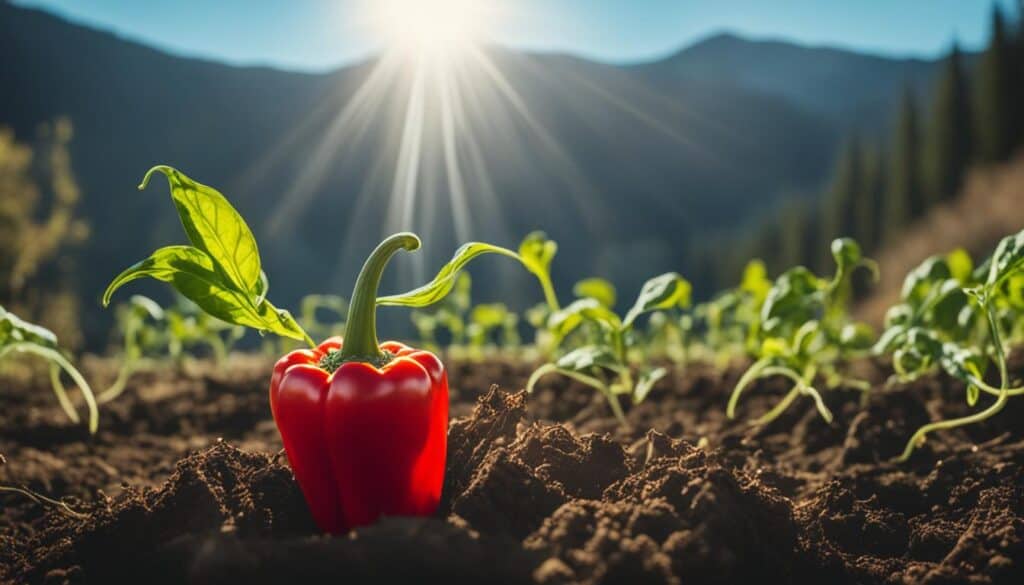
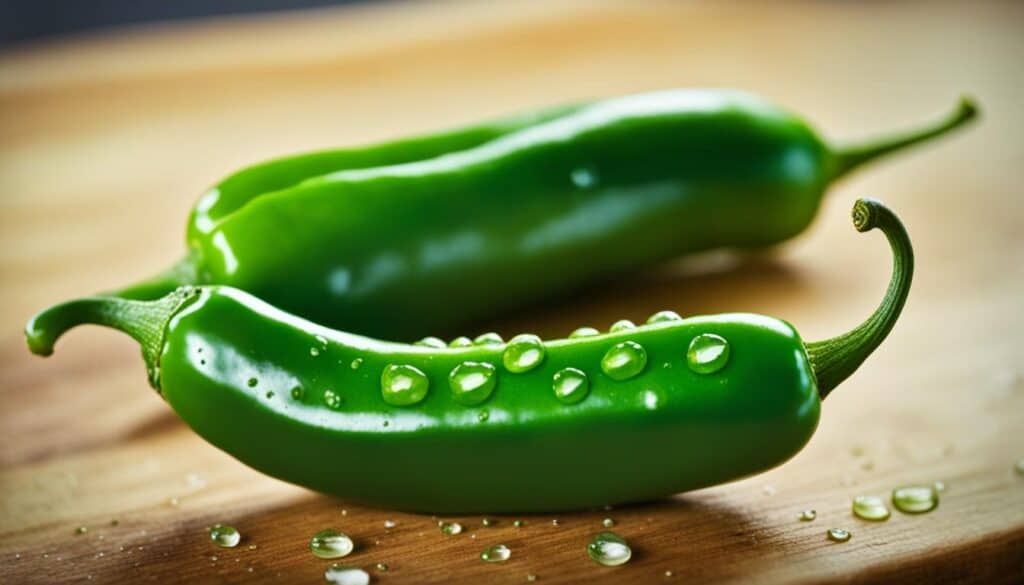
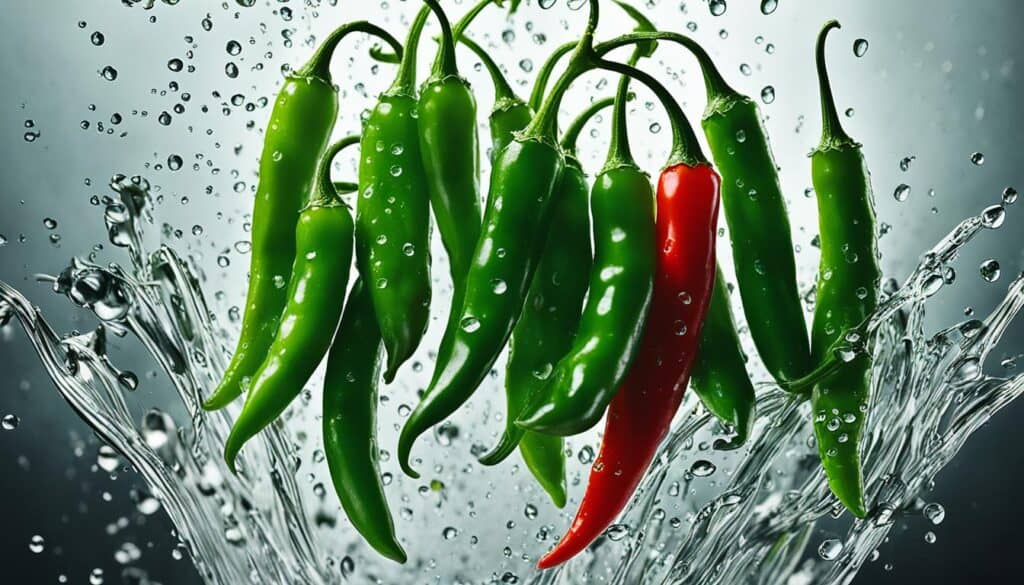
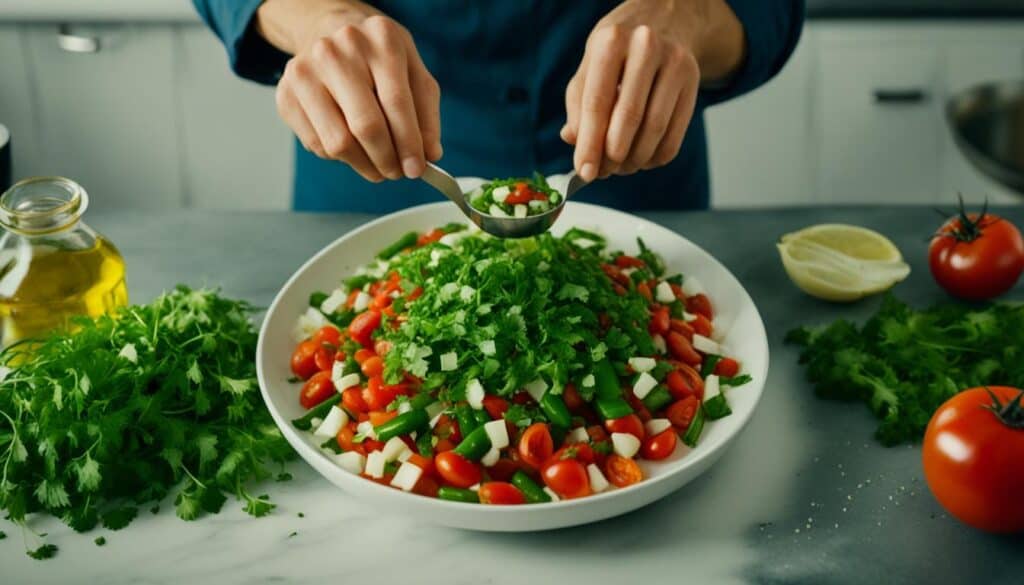
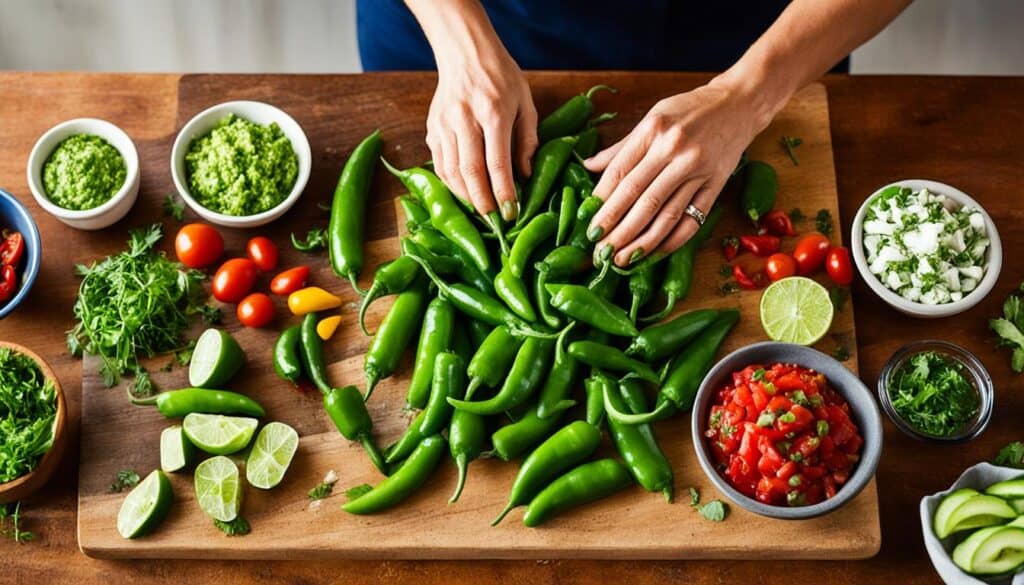



Leave a Reply